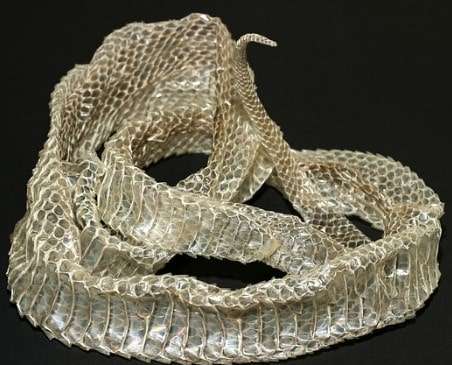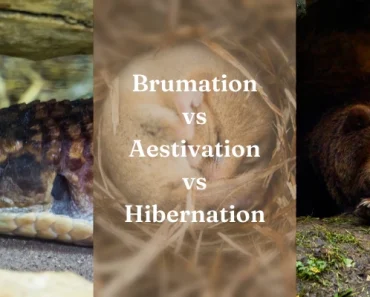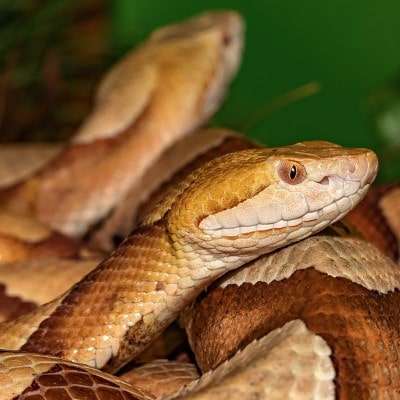Are you thinking about getting a pet turtle? Maybe you just got a pet turtle and you didn’t think about whether pet turtles hibernate?
Maybe you are thinking about getting a pet turtle and are curious to know if pet turtles hibernate in the winter.
Whatever the reason, I’m glad you found your way here.
In this article, I discuss the question and answer on whether pet turtles hibernate in the winter, signs to watch out for before your pet turtle hibernates, whether you should let your pet turtle hibernate, which common species of turtles hibernate, and more.
Do Pet Turtles Hibernate in the Winter?
Many species of turtles from colder climates will hibernate or brumate during the winter months due to the colder temperatures.
Pet turtles still have the instinct to hibernate when the weather turns cold.
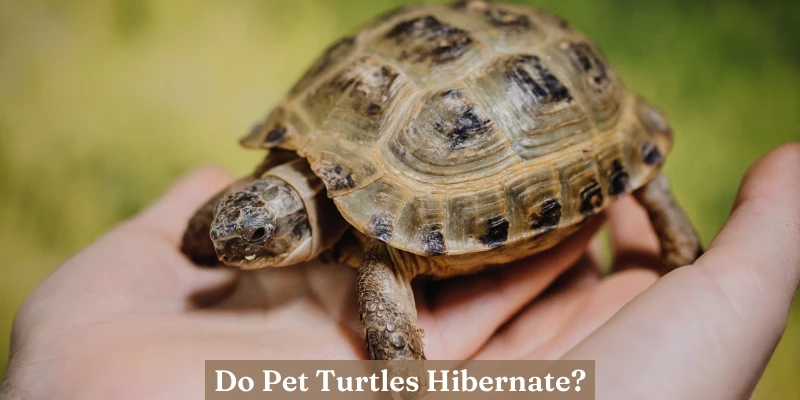
Your pet turtle may decide to try and hibernate when the weather gets cold, so it is best to recognize their behavior to determine if they are about to hibernate and what you can do about it.
I will use the words brumation and hibernation interchangeably in this article, but technically turtles brumate because they are cold-blooded. For the purpose of this article, I use both terms.
When discussing hibernation or brumation in turtles, I’m referring to turtles being in an inactive state during the winter months.
Some may go into a deep sleep, but some may just become inactive and not eat while still being alert.
This doesn’t mean that your pet turtle will automatically go to sleep and sleep the whole winter away when it gets cold.
This just means that your turtle may become inactive when it believes the weather is too cold and when its instinct kicks in to prepare for brumation.
How to Know When Pet Turtles Are Going Into Hibernation
When it is time for turtles to go into hibernation, they will become inactive and not eat. This is what can happen to turtles that typically hibernate in the winter, but are now pet turtles inside the house.
This is instinctual behavior carried over by their wild turtle ancestors.
Since pet turtles are typically kept warm inside a house during the winter, pet turtles can go into a state of inactivity instead of full hibernation mode with deep sleep or they may not hibernate at all.
It is similar to being in hibernation mode, because turtles will remain inactive and not eat most of the time, but they are not always going into a deep sleep.
This, however, should not be confused with an unwell turtle.
It is important to consider the notion that your pet turtle may be sick when it is inactive and not eating.
To know for sure, check with a local veterinarian to determine the best way to treat your inactive turtle and to be sure there is nothing wrong with your pet.
How to Tell When Pet Turtles Are in Hibernation
As stated, pet turtles typically go into what is called brumation, which is hibernation for cold-blooded animals. They typically just remain inactive and usually don’t eat any food.
Some may go into a deep sleep if the environment and temperature are right.
It just depends on your turtle. Some will not eat and remain inactive while some will still eat but remain inactive.
It can be easy to mistake a brumating turtle for a sick one. If you have any doubt, contact a vet for advice. Most turtles indoors will keep some type of signs of life in them even if they go into brumation.
If the temperature stays warm in the home, it is most likely the turtle will not go into brumation and continue to be active.
It depends on many factors but when in doubt, get your turtle checked out.
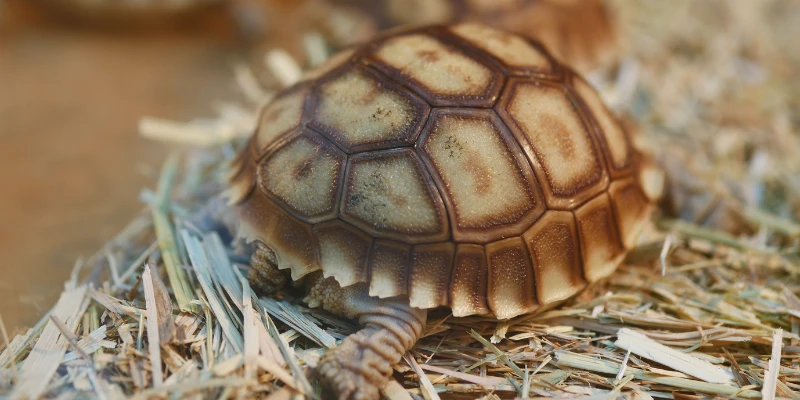
How Long Do Pet Turtles Hibernate?
The average hibernation cycle of a turtle is between 2 to 4 months. However, some turtles have been known to hibernate for around 6 months.
It is hard to say how long your turtle will hibernate because it depends on the species of turtle, the turtle’s environment, and other factors.
Should You Let Your Pet Turtle Hibernate?
One benefit of allowing your pet turtle to hibernate or brumate is that it can help with the breeding process.
If you are trying to breed your turtle, then allowing it to brumate might be a good option to increase the odds of having successful breeding.
However, if your turtle is showing any sign of illness, it is important to get your turtle checked out by a vet before you allow it to go into brumation.
If a sick turtle goes into brumation, it may not survive during the brumation period or may die shortly after it comes out of brumation.
Examine your pet turtle thoroughly to ensure there are no signs of illness. Even if you don’t find any signs of illness, it is still a good idea to get your turtle checked out by a vet anyway.
Below are some signs to watch out for to ensure you have a healthy pet turtle.
- Aquatic turtles that stay out of their water at night may be unhealthy.
- Abscesses or other signs of parasites are signs of an unhealthy turtle.
- Discharge coming from your turtle’s nostrils is a sign of sickness.
- Shell rotting or discoloration is not normal and is a sign of illness in your turtle.
- Slow or difficulty breathing is a sign of issues. If your turtle is opening and closing its mouth a lot, it could be having a hard time breathing and should get checked out immediately by a vet.
- Strong smells coming from your turtle are a sign of illness.
- Swollen eyes or ears are a sign of illness in your turtle.
- Visible cuts or wounds on your turtle are other issues to be concerned with.
- Weight loss can be an indicator of sickness in your pet turtle.
These are just some of the common signs of illness that should be considered when allowing your turtle to hibernate.
If you have a sick turtle, it is best to get advice from your veterinarian to see what to do and how to proceed with getting your pet turtle healthy.
How to Let Your Pet Turtle Hibernate
I would first like to start by saying that letting your pet turtle hibernate may be dangerous if the turtle has any kind of sickness, so get it checked out before letting it go into brumation.
If it is an indoor turtle, then it most likely won’t hibernate if you keep it active during the winter months.
However, if you would like to let your pet turtle hibernate, WikiHow has a great article that breaks down everything you need to know about letting your pet turtle hibernate and caring for your pet turtle while it is hibernating.
You can check that article out here.
How to Stop Your Pet Turtle From Hibernating
In most cases, a pet turtle will not attempt to hibernate if the temperature is not cold.
So if you have your turtle inside with climate control at a comfortable room temperature, your turtle will likely not try to hibernate since the temperature will be warm.
It is suggested that you keep your pet turtle active during the winter as well. This will deter your pet turtle from hibernating.
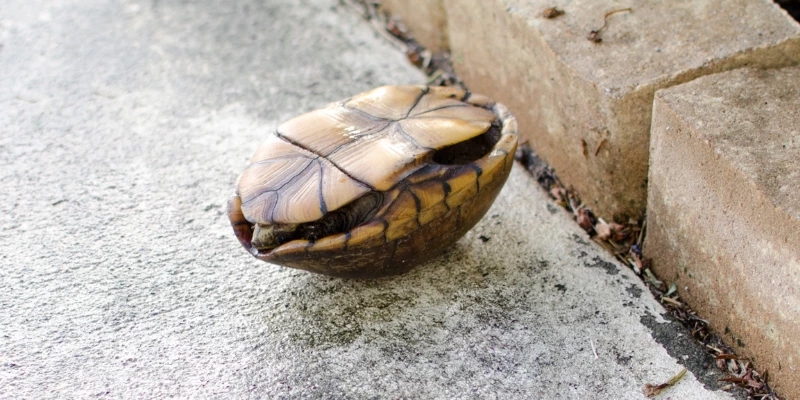
Is My Pet Turtle Hibernating or Dead?
Signs that your pet turtle may be dead and not hibernating:
- Terrible smell – Once a turtle has passed, it will not take long before they start giving off a bad smell. If your turtle is giving off a bad smell, it may be dead or very sick at the least.
- Eyes – If your turtle’s eyes are sunk in the back of its head, that is an indicator that your turtle has passed.
- Lifeless – If your turtle is not moving at all and appears lifeless, it may be dead. Even when most turtles are in brumation, they will show some signs of life, such as their eyes being open or they may open and close their mouths.
Those are the typical signs of a turtle that has passed. If you think your turtle has passed, you should first get it checked out by your local veterinarian just to be 100% sure.
Turtles typically live a long time due to their low metabolism. Even if they end up eating something poisonous, they may still live for up to a year before the poison ends up killing them.
So just keep all this in mind before declaring your pet turtle dead.
It is always best to get a professional opinion if you are unsure, so I highly suggest contacting your local veterinarian if you have any questions.
Which Species of Pet Turtles Hibernate?
Most pet turtles that come from tropical regions will not hibernate, but pet turtles from climates that get colder may brumate in the winter.
Here are some typical pet turtle and tortoise species that hibernate in the winter:
- Box turtles
- Desert tortoises
- Gopher tortoises
- Hermann’s tortoises
- Marginated tortoises
- Red-eared slider turtles
- Russian tortoises
- Snapping turtles
- Spotted turtles
- Texas tortoises
- Wood turtles
Recap
This article should’ve given you the knowledge you need about how pet turtles hibernate, how long pet turtles hibernate, whether you should let your pet turtles hibernate, and much more.
It is always best to contact your vet if you are unsure of whether your pet turtle is hibernating or if something is wrong with your pet turtle.
This article provides valuable and relative information about pet turtles and their hibernation, but it is in no way a substitution for veterinarian advice.
If you have any doubts about your turtle’s status and health, it is best to contact your vet and get their expert advice.
I hope you enjoyed this article and look forward to writing more.
In my family, we have a Red-eared slider and he has never tried to go into full brumation.
He has become a bit inactive here and there, but he has never quite become inactive completely.
If you liked what you read, give this article a try to see if you like it as well.
Where do turtles go in the winter?
References
